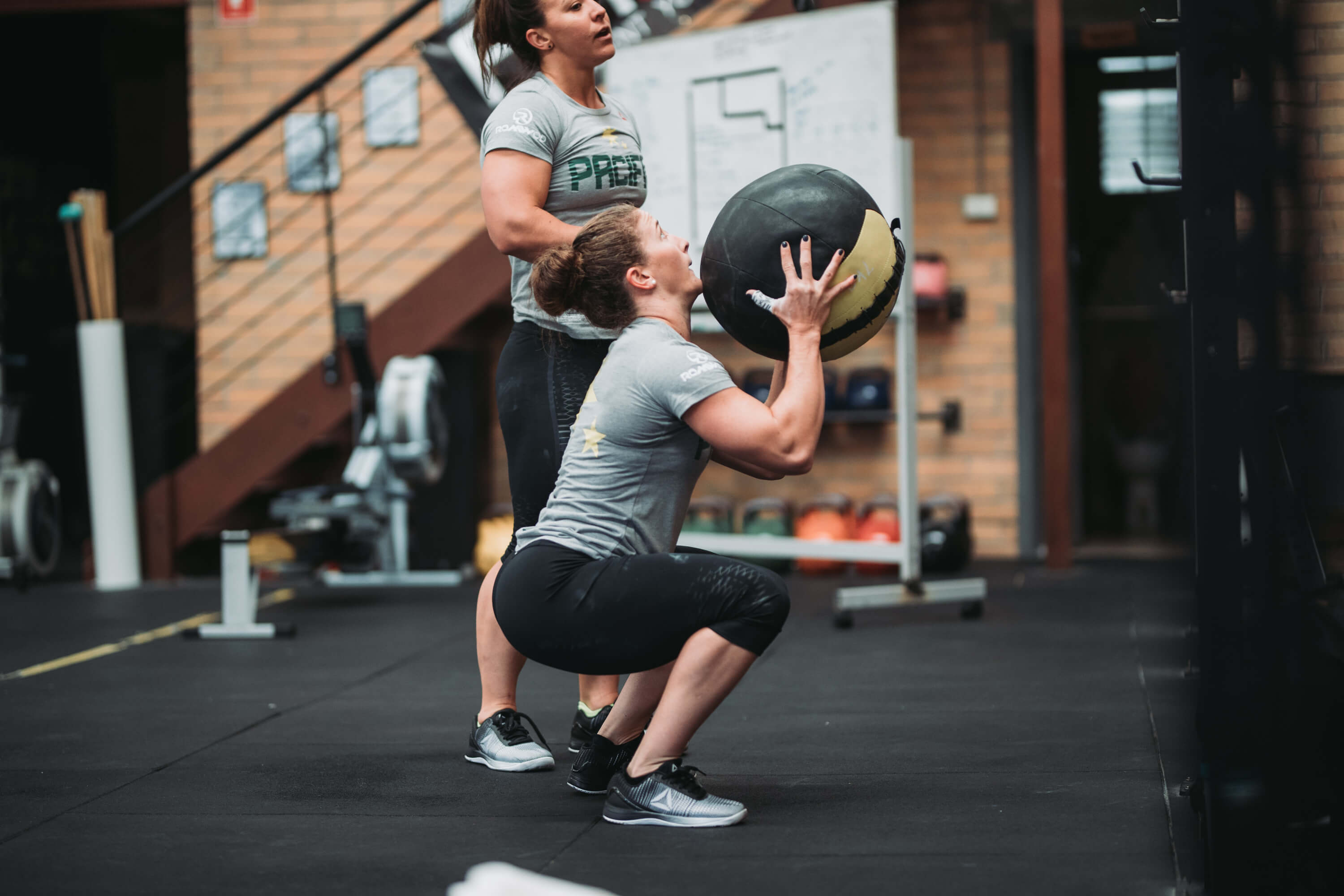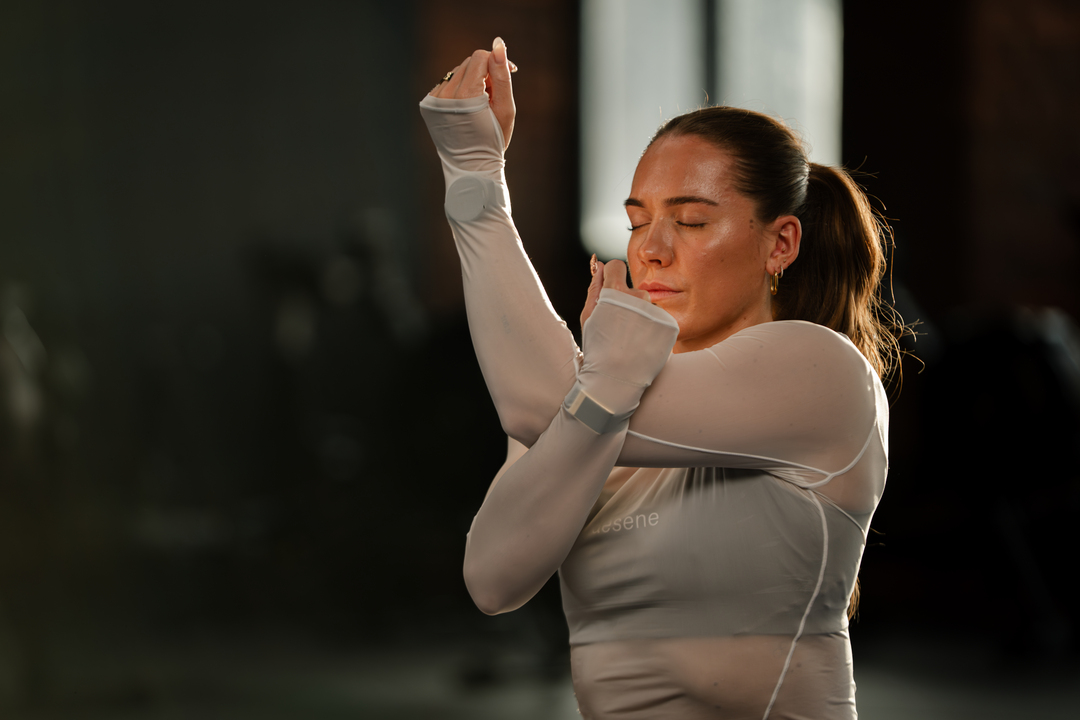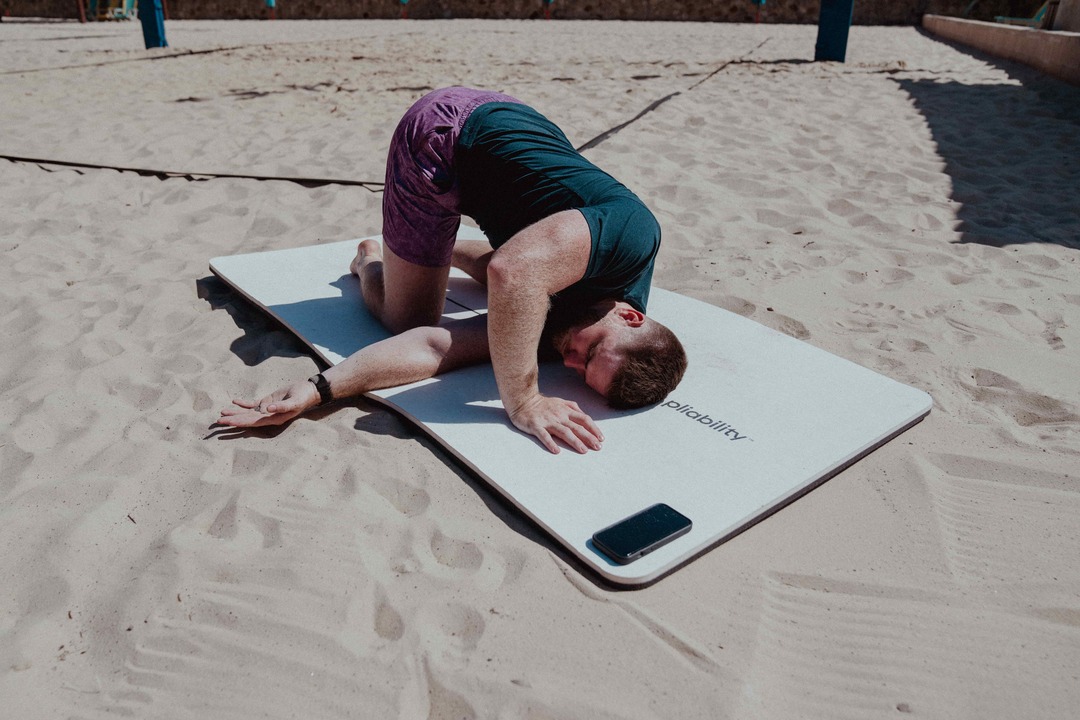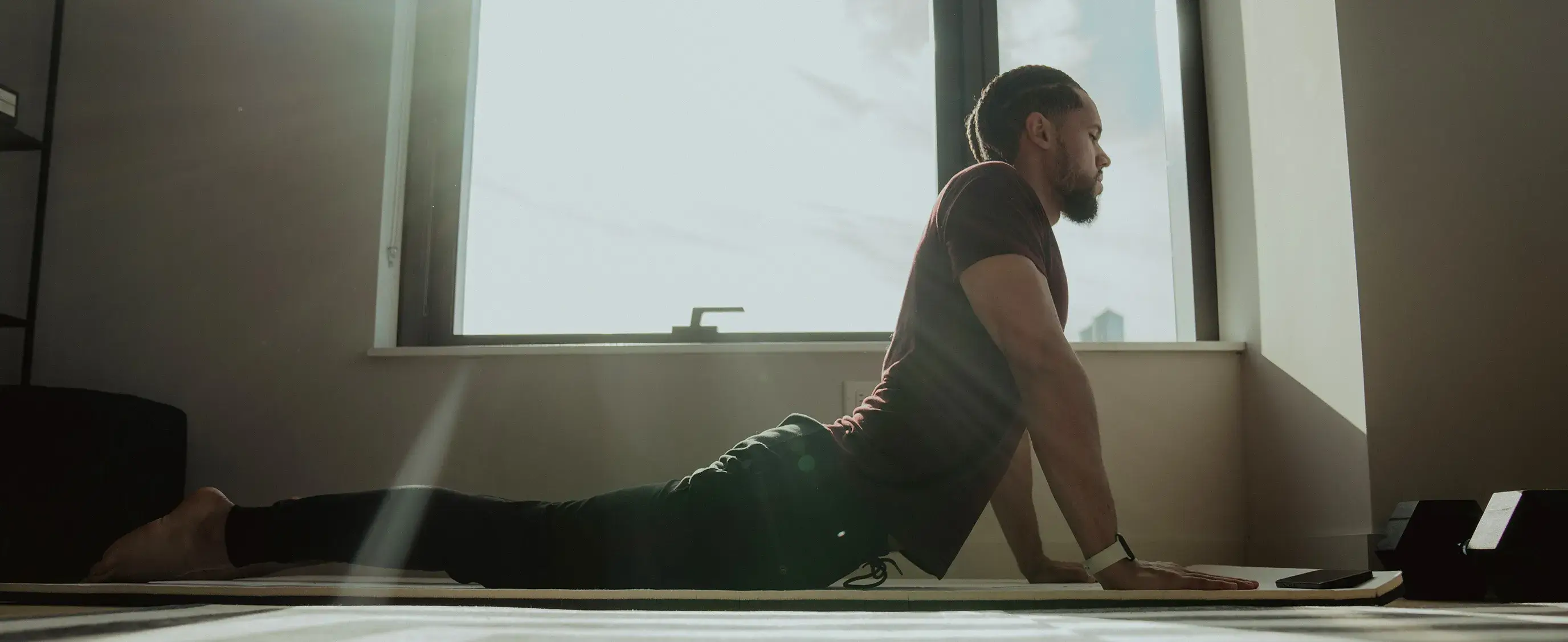Have you ever tried to get out of bed after a hard workout only to realize that you can’t move? Even the most dedicated athletes can struggle with flexibility, which is often the first thing to do when we stop training or push ourselves too hard. Muscular flexibility exercises can improve your range of motion and relieve stiffness to enhance performance and help you recover from injuries. When you incorporate targeted flexibility exercises into your routine, you’ll enjoy increased mobility, allowing you to stay agile, strong, and pain-free. This article will help you achieve your goals by offering valuable insights into muscular flexibility exercises, including how to integrate them into your training routine for optimal performance.
Pliability's mobility app is a valuable tool to help you stay agile, strong, and pain-free by incorporating practical muscular flexibility exercises that enhance mobility, prevent injuries, and support overall physical performance.
What is Muscular Flexibility and Why It Matters

Flexibility is more than being able to bend or stretch easily. Being flexible is your body’s ability, specifically, the ability of any given joint, to perform movements at your maximum range of motion (ROM, for short). Even though some people may naturally have more ROM than others, having a limited ROM doesn’t mean you can’t increase it with the help of flexibility exercises over time.
The Importance of ROM at Any Age
As with many things in our body, ROM decreases with age. The good news is that it’s something we can continually work on and improve, no matter our age.
Whether you lead a sedentary lifestyle or your fitness routine is solely strength and cardio-based training, neglecting to pay attention to your flexibility can result in less mobility, restricting what you can do. Improved flexibility leads to numerous benefits.
Why Train Flexibility: It’s Not Just About Touching Your Toes
Besides being able to forward fold like a boss at your local yoga class, consider incorporating flexibility training into your workout routine. Why? Because as our ROM naturally declines with age, it’s important to continually train your flexibility to effectively counteract potential issues on the horizon that may compromise the quality of your life, such as:
- Increased risk of injury
- Postural misalignment (think of a hunched elderly person)
- Decline in everyday functional movements
- Physical ailments such as back pain.
Back Pain and Flexibility
An estimated 80 percent of Americans suffer from lower back pain. What does this have to do with flexibility? Back pain triggers are due to inflexibility and a lack of mobility in other parts of the body. Generally, lower back pain is due to tight muscles paired with weaker ones, leading to imbalances.
The tight muscles pull the weak muscles out of place along with the skeletal system they attach to. These imbalances are at the root of most back issues and contribute to a wide range of general aches, pains, and postural problems.
Benefits of Limbering Up
Releases physical and mental tension. Generally, a side effect of stress is muscle contraction leading to tightness in various parts of your body, e.g., tension headaches due to scrunched shoulders and upper back. Flexibility stretches are a fantastic way to combat the effects of stress.
Stretching first thing in the morning helps wake up your body and mind and releases mood-boosting endorphins, lending your day a sense of ease. Stretching before bed will also encourage a good night’s sleep. Corrects poor posture.
Fight Back with Flexibility
Sitting at a desk all day? Then, you should incorporate a few flexibility exercises throughout your day to counteract the slouched-back effect of a typical office job ailment. Stretching out your lower back, chest, and shoulders can:
- Realign your spine
- Alleviate any general physical tension
- Help prevent that Hunchback of Notre Dame posture down the line
Builds Stamina and Fitness
Flexibility exercises (whether passive or dynamic) will help increase blood flow to muscles and tendons. How does this affect your stamina and athletic performance? More blood circulation equals more oxygen delivered to your body and improved physical endurance. Prevents injury. Incorporating flexibility stretches as part of your regular fitness routine can ease post-workout soreness, but how?
Faster Recovery Through Flexibility
Flexibility stretches can enable increased nutrient delivery to your stiff muscles, thus expediting recovery. Developing your flexibility will help you recover faster and loosen muscles, making them more readily available for your next workout and extending your ROM, avoiding pulls or strains.
Boosts Blood Circulation
We’ve already touched on the increased blood flow that results from flexibility exercises, but did you know that in addition to the above benefits, improved circulation enhances cellular development and organ health?
Reduces Cholesterol
You may be reading the above header and asking yourself how. Increasing flexibility means you improve blood circulation and, as a result, lower blood pressure, reverse the hardening of your arteries, and prevent heart disease–all an effect of high cholesterol. Of course, you can only achieve this if you’re already eating a healthy, balanced diet; you can’t outstretch poor nutrition.
Related Reading
- Why Is Flexibility Important
- Does Flexibility Increase Speed
- Can Anyone Become Flexible
- Does Stretching Make You More Flexible
- Why Is Flexibility Important for Team Sports
- Increase Back Flexibility
- How Long Does It Take to Get Flexible
- Which Activity Is a Type of Flexibility Exercise?
- Sports That Require Flexibility
- What Is the Best Strategy to Improve Flexibility in Your Legs and Back
- Mobility vs Flexibility
- Sports That Require Flexibility
Effective Muscular Flexibility Exercises

Stretching exercises are the cornerstone of any flexibility improvement regimen. These exercises elongate muscles and increase tissue temperature, enhancing the pliability and extensibility of muscles and connective tissues. They contribute to an increased range of motion and improved muscle function.
Seven Types of Flexibility Exercises to Improve Your Flexibility
Flexibility training incorporates various stretching approaches suited for different aspects of fitness – be it warming up, cooling down, or developing your ROM. Here are seven of the most common and popular flexibility exercises to help you get your stretch on!
1. Static Stretching
Here you develop muscular tension without contracting the stretched muscle. You hold a challenging stretch for at least 20-30 seconds while gradually increasing your ROM.
2. Active Stretching
Also referred to as static-active stretching, active stretches are when you assume a position and then hold it for a desired amount of time, which is challenging to do for longer than 10-15 seconds. An example would be lying on your back, holding one leg straight, and then holding it. Many yoga postures are considered active stretching.
3. Passive (or Relaxed) Stretching
This stretch requires external “assistance” to help deepen the ROM and intensity of the stretch. It’s a technique where you relax into a stretch while an external force (someone or something) intensifies the position further.
4. Dynamic Stretching
Dynamic stretching requires movement to help increase your ROM. It consists of controlled, gentle movements that incrementally take you to the limits of your ROM and then slightly past it. This is the number one method to warm up for activity as it is the most effective, safest, and will not compromise performance afterward.
5. Isometric Stretching
A type of static flexibility exercise where you use isometric muscular contraction to stretch the intended muscles with the aid of a partner or an object, e.g., a chair, table, ledge, etc.
6. PNF Stretching
PNF stands for proprioceptive neuromuscular facilitation and is a more advanced form of flexibility stretching, often used in physical rehabilitation. This contract-stretch-hold may be the most effective stretching technique for increasing ROM.
7. Ballistic Stretching
As the name suggests, this is an explosive and rather extreme form of stretching. You perform this stretch by using the momentum of a moving body part to force it beyond its regular ROM. It’s used as part of a warm-up and can be compared to a dynamic stretch, but it is a bit more aggressive. Be careful, as this is one of the more dangerous stretches, and some professionals believe the potential for injury outweighs the benefits.
Examples of Stretching Exercises
1. Dynamic Lunges
Directions:
- Stand with one foot behind you and one foot in front, about two to three feet apart.
- With your weight on your back leg, bend your knees and lower your body until your back knee is a few inches from the floor.
- When your knees are bent, your front thigh should be parallel to the floor and your back knee should point toward the floor.
- Push back up, keeping your weight on the heel of your front foot.
- Continue for 5‒10 reps before switching foot positions.
- Muscles stretched: Glutes, hamstrings, quadriceps, calves.
2. Stair Calf Stretch
Directions:
- Stand on the bottom step with your heels hanging off of the edge.
- Slowly drop your heels down. Hold on to the wall or stair rail as you lower down.
- Hold this position for 20-30 seconds.
- Repeat two to three times.
- Muscles stretched: Calves, Achilles' tendons
3. Lizard Pose (Utthan Pristhasana)
Directions:
- Begin in the Downward-Facing Dog.
- Step your right foot forward, outside of your right hand. Ensure your foot comes all the way forward until your toes align with your fingers. Your right knee should be bent at a 90-degree angle and shouldn’t go farther forward than your ankle.
- Bend your elbows until your forearms are on the floor, keeping your shoulders above your wrist.
- To ensure your hips don’t sag towards the floor, press into your left heel to keep your left leg active. Hold this position for 10 seconds.
- Straighten your arms and bring your right leg back into the downward-facing dog position to release the position.
- Hold this position for 10 seconds.
- Repeat the steps starting 10 times on each side.
- Muscles stretched: Hips, groin, inner hamstrings.
4. Lying Quad Stretch
Directions:
- Lie on your right side on a mat or the floor with your legs extended straight away from your body, resting your head on your right arm to support your neck.
- Bend your left knee and pull your left heel up towards your left glute, using your left hand to grab hold of the top of your left foot.
- Tighten your core to maintain stability through your pelvis; maintain this core tightness throughout the stretch. Keep your hips on top of one another so you don’t strain your quadriceps and hip flexors.
- Pull your left heel and lower leg towards your tailbone, keeping your left thigh and knee resting on the inside of the leg on the floor.
- Hold this position for 30 seconds, straighten the leg, and squeeze your thigh.
- Repeat this two to five times, then perform this stretch on the opposite leg.
- Muscles stretched: Quadriceps, hip flexors, extensor tendons (top of feet).
5. Overhead Triceps Stretch
Directions:
- Stand with your feet hip-width apart, or sit in a chair with your back straight.
- Lift your shoulders toward your ears and then lower them back down. This prepares you for proper form, keeping your shoulders down during this stretch.
- Extend your right arm towards the ceiling, then bend at the elbow to bring the right palm toward the center of your back, resting your middle finger along the top of your spine.
- Use your left hand to gently push your elbow toward the center and down.
- Hold this stretch for 30 seconds for three to four repetitions on each side.
- Muscles stretched: Triceps, deltoids, lats.
6. Standing Hamstring Stretch
Directions:
- Stand with your spine in a neutral position, feet hip-width apart.
- Place your right leg straight before you, then slowly bend your left knee.
- Gently lean forward while placing your hands on your bent left leg.
- Hold this stretch for 10 seconds, then repeat five to 10 times on each side.
- Muscles stretched: Hamstrings, calves.
7. Cat-Cow
Directions:
- Begin on your hands and knees with your hands directly under your shoulders and knees hip-width apart.
- As you inhale, move into cow pose by pressing your chest forward and up, allowing your belly to sink toward the ground.
- Slowly raise your head, relax your shoulders away from your ears, and look forward.
- As you exhale, come into cat pose. Round your spine upward, tucking your tailbone and drawing your pubic bone toward your belly.
- Repeat this 10 times.
- Muscles stretched: Shoulders, neck, hip flexors, lumbar and thoracic spine.
8. Sphinx Pose
Directions:
- Lie on your belly, legs side by side.
- Set your elbows under your shoulders and forearms on the floor, parallel to each other.
- Lift your upper body away from the floor into a mild backbend while squeezing your glutes together.
- Stretch your toes to the wall behind you. Pull your hips toward your heels to protect your lower back as you hold the pose.
- Activate your core and hold this pose for 15 seconds, then release your belly, lower your torso, and head to the floor. Turn your head to one side and lay for five seconds.
- Repeat this stretch two or three times.
- Muscles stretched: Shoulders, abdominals, glutes.
9. Shoulder Rolls
Directions:
- To start, stand with your arms by your sides and your feet about shoulder-width apart.
- Rotate your shoulders forward in big circles; repeat the movement 10 times.
- Reverse the rotation. Make the circles in the opposite direction, moving backward.
- Repeat this motion 10 times.
- Muscles stretched: Upper back, shoulders, chest.
10. Wrist Figure 8’s
Directions:
- Interlace your fingers in front of your body. Keeping your elbows tucked into your sides, move your interlaced hands in a figure-eight motion.
- Allow your wrists to rotate fully so that each hand alternates on the other.
- Repeat this stretch for 10 to 15 seconds at a time.
- Muscles stretched: Wrists, forearms.
11. Knees to Chest
Directions:
- Lie on your back with your knees bent and your feet flat on the floor.
- Raise one bent knee, grabbing your lower leg with interlaced fingers under your knee.
- Gently pull your bent knee toward your chest.
- Make sure to keep your muscles relaxed as I perform this stretch.
- Hold for a few seconds before returning your leg to the floor.
- Do the stretch about 10 to 15 times, alternating sides.
- Muscles stretched: Lower back, hamstrings.
12. 90/90 Stretch
Directions:
- Sit on the floor and bend one leg in front of your body.
- Position yourself so your lower leg and knee are resting on the ground. Your leg should form a 90-degree angle, and your ankle should be neutral so your foot is straight.
- Position your other leg beside you with your hip rotated inward and your shin and ankle on the ground.
- Bend your knee so your leg forms a 90-degree angle. Your back knee should align with your hip, and your ankle should be neutral.
- Keep your back straight and resist the urge to bend to one side, instead balancing your weight equally on both hips.
- Hold this stretch for up to 60 seconds, breathing deeply to relax into the position.
- Complete two to three reps on each side.
- Muscles stretched: Hips, groin, lower back.
Other Effective Flexibility Training Methods
Yoga
Yoga, an ancient practice rooted in Indian philosophy, is renowned for its potential to enhance flexibility. It encompasses a variety of postures or ‘asanas’ that stretch multiple muscle groups simultaneously, promoting balance, flexibility, and strength. The slow, controlled movements in yoga encourage mindfulness, aiding in a deeper stretch.
Pilates
Pilates is another effective method to improve flexibility. It comprises low-impact flexibility, muscular strength, and endurance movements that emphasize proper postural alignment, core strength, and muscle balance. The elongated movements in Pilates encourage muscle stretching, hence promoting flexibility.
Foam Rolling
Foam rolling, also known as self-myofascial release, utilizes a cylindrical foam roller to self-massage muscles and fascia. This practice can reduce muscle tension and increase joint range of motion, enhancing flexibility without reducing muscle performance.
Massage Therapy
Massage therapy involves manipulating the body’s soft tissues, which can help relax muscles, increase blood circulation, and improve joint range of motion. It can complement a regular stretching routine, increasing flexibility over time.
Related Reading
- Why Is It Important for Athletes to Be Flexible
- Flexibility Sports Examples
- How Many Days Per Week Can You Perform Flexibility Exercises?
- How to Become Flexible if You Are Very Stiff
- Flexibility Exercises for Kids
- Flexibility Exercises at Home
- How Can Flexibility Training Reduce the Risk of Back Pain?
- Flexibility Exercises for Beginners
- How Frequently Should Flexibility Exercises Be Performed for Best Results?
- Benefits of Flexibility
- Flexibility Workout Plan
- Types of Flexibility Exercises
- Back Stretches for Flexibility
- Strength and Flexibility Training
- Exercises for Lower Back Pain
- How to Stretch Quads
- Morning Stretch
- Best Quad Stretches
- At What Average Age Does Flexibility Start to Diminish for Most People?
- IT Band Stretches
- IT Band Stretch
- IT Band Exercises
- Inner Thigh Stretches
- Cool Down Stretches
- Standing Quad Stretch
Improve Your Flexibility with Our Mobility App Today | Get 7 Days for Free on Any Platform
Pliability offers a fresh take on yoga tailored for performance-oriented individuals and athletes. Our app features a vast library of high-quality videos designed to improve flexibility, aid recovery, reduce pain, and enhance range of motion. Pliability provides daily-updated custom mobility programs for those interested in optimizing their health and fitness.
Body Scan Feature
Pliability also includes a unique body-scanning feature to pinpoint mobility issues. If you're feeling limited by pain or the ability to move, Pliability aims to complement your fitness routine and help you move better.
Sign up today for 7 days absolutely for free, on iPhone, iPad, Android, or on our website to improve flexibility, aid recovery, reduce pain, and enhance range of motion with our mobility app.
Related Reading
- Leg Flexibility Exercises
- Pliability vs Flexibility
- Flexibility Workout
- Flexibility Routine
- Best Stretches for Flexibility
- Best Flexibility Apps
- StretchIt vs Pliability
- Bend vs Stretchit
- Bend App Alternative
- Band Stretches
- Side Stretches
- Stretches for Sore Legs







